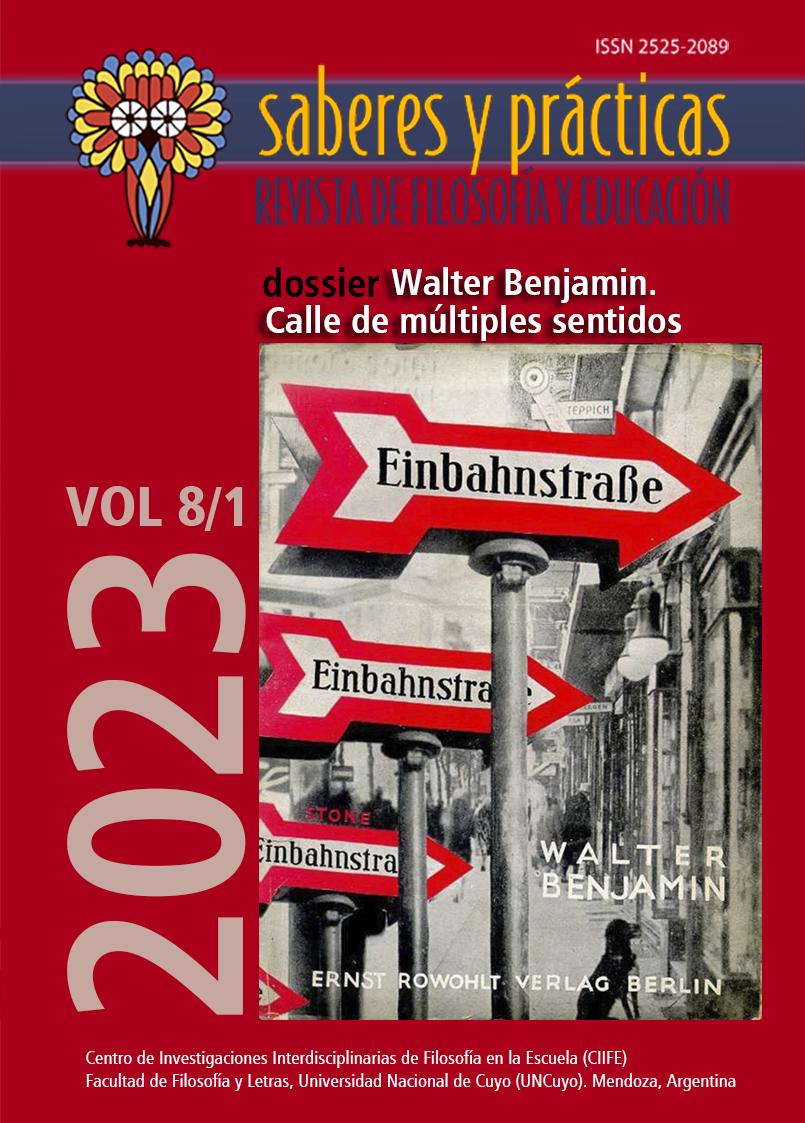Fashions on a Collective Scale: Walter Benjamin and the Figures of Women in the Modern City
DOI:
https://doi.org/10.48162/rev.36.094Keywords:
fashion phenomenon, infernal interlinking, urban, figure of the woman, capitalismAbstract
This article mainly draws on the Konvolut B [Fashion] from the Book of Passages (Das Passagen-Werk) written between 1927 and 1940 and published posthumously. It reveals one of the phenomena of the infernal chain of modernity and capitalism: fashion.
Far from being a notion linked to clothing, ornament, or adornment, to woman or women, Benjamin succeeded in demystifying fashion by revealing its internal characteristics: that of being linked to the past, to tradition in order to introduce an innovation that will eventually expire in order to be reborn, like the continuum of history, in a new fashion.
If fashion is introduced through the city, what role did the city play and what links are there around the figures of women in this Konvolut? We propose to unravel this articulation that would make the German philosopher's writing a highly suggestive revelation: that of finding in fashion a barrier erected by the upper classes to distinguish themselves from the lower classes, just as Haussmann did in the city of Paris to limit the action of the barricades.
Downloads
References
Benjamin, W. (2016). Libro de los pasajes. Akal.
Benjamin, W. (2014). Calle de mano única. El Cuenco de Plata.
Benjamin, W. (2002). Sobre el concepto de historia. En: La dialéctica en suspenso. Fragmentos sobre historia. Lom Ediciones.
Buck-Morss, S. (2001). Dialéctica de la mirada. Walter Benjamin y el proyecto de los Pasajes. La balsa de la Medusa.
Buck-Morss, S. (2006). Walter Benjamin, escritor revolucionario. Interzona editora.
Goldwaser Yankelevich, N. (2022). La moda, revolución efímera. Las cuarenta.
Goldwaser Yankelevich, N. (2020). Escribir mujer, fundar nación. Literatura y política en el Río de la Plata y Nueva Granada (1835 – 1853). Milena Caserola.
Goldwaser Yankelevich, N. y F. Naishtat (2022). La moda, Jano en movimiento: novedad y muerte en la aceleración del tiempo moderno. Revista El hilo de la fábula. pp. 135 – 145.
Hobsbawm, E. (2002). Introducción: La invención de la tradición. En: Hobsbawm, E. & T. Ranger (eds.), La invención de la tradición. Crítica.
Lipovetsky, G. (2019). El imperio de lo efímero. La moda y su destino en las sociedades modernas. Anagrama.
Simmel, G. (2015). Filosofía de la moda. Casimiro.
Steel, V. (2017). Fashion Theory. Hacia una teoría cultural de la moda. Ampersand.
Tarde, G. (2011). ¿Qué es una sociedad? En: Creencias, deseos, Sociedades. Cactus.
Published
How to Cite
Issue
Section
License
Copyright (c) 2023 Nathalie Goldwaser
This work is licensed under a Creative Commons Attribution-NonCommercial-ShareAlike 2.5 Argentina License.









